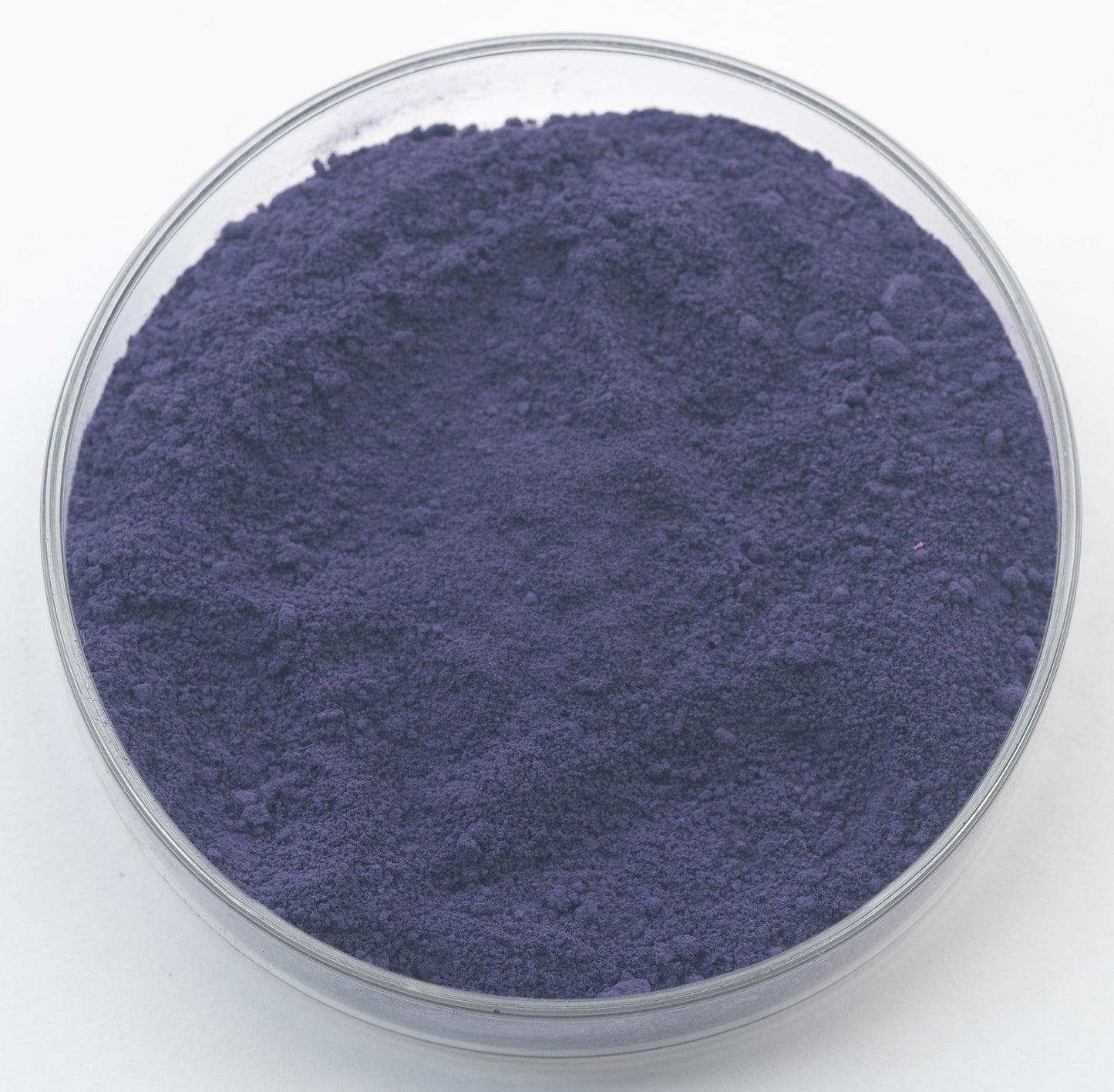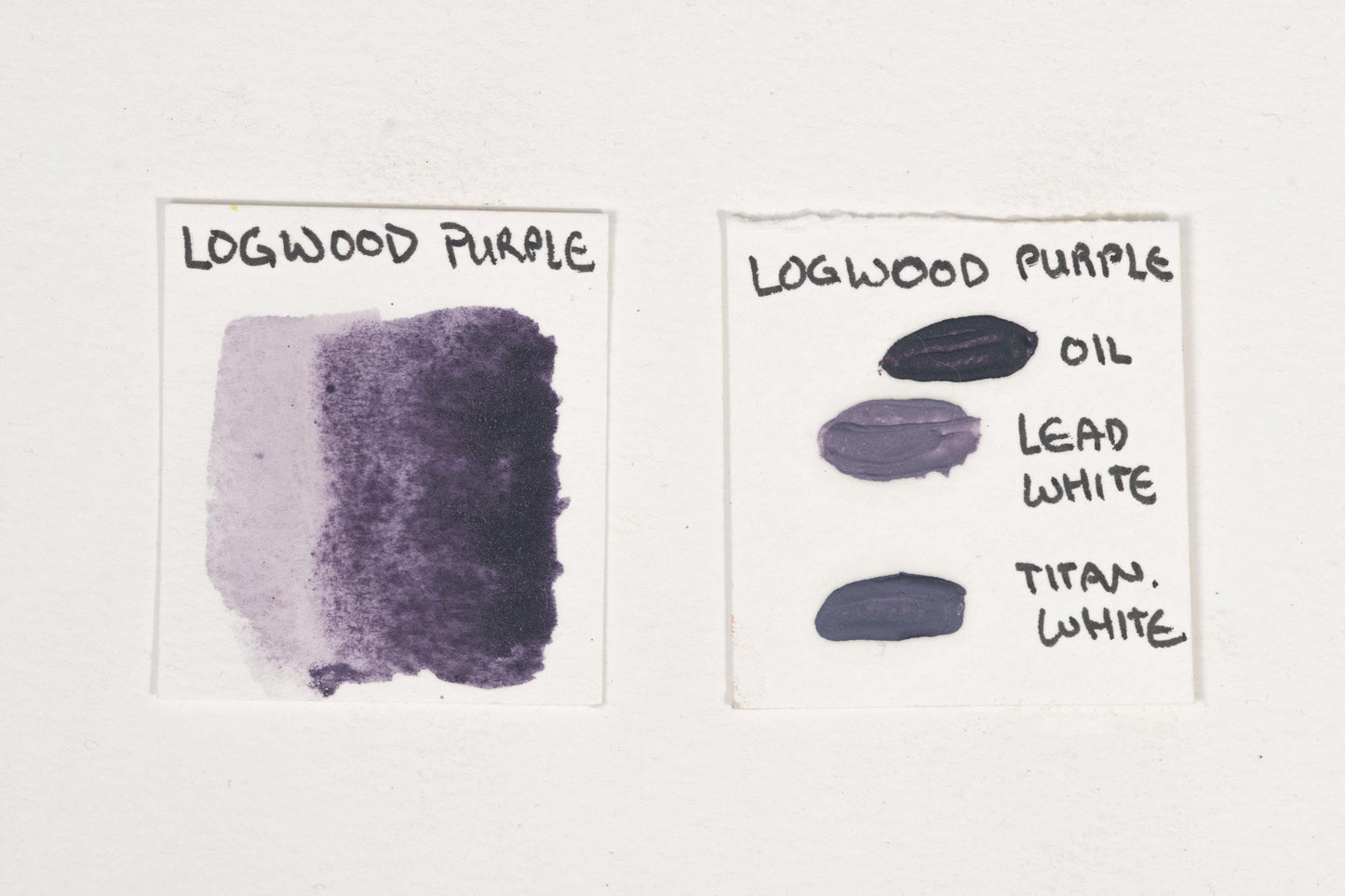Logwood Purple Lake
Logwood Purple Lake
Couldn't load pickup availability
Share


Description
Logwood Lake is a handmade natural lake pigment derived from the heartwood of the logwood tree (Haematoxylum campechianum), a species native to Central America and the Caribbean. The dye is extracted by boiling the wood chips to release haematoxylin, the primary coloring compound. When combined with a mordant such as alum, iron, or tin, the dye forms an insoluble pigment that can range in color from deep violet to rich reddish-purple or black, depending on the mordant used.
Logwood Lake produces deep, cool purples and blues with subtle undertones that shift based on environmental factors and binders. It has long been valued for its ability to create rich shadows and atmospheric depth in paintings, manuscript illuminations, and textile dyeing. While it is moderately lightfast, exposure to strong sunlight can cause fading, making it best suited for archival work, protected artworks, and historical reproductions.
History
Logwood has a long and complex history, first used by the Maya and later becoming a major commodity in European dyeing and pigment production during the 16th century. Spanish explorers introduced logwood to Europe, where it quickly became prized for its ability to produce a wide range of colors, from deep blacks to purples and blues. British, Spanish, and Dutch powers fought for control over logwood forests, particularly in what is now Belize, where logwood cutters played a significant role in colonial expansion.
During the 18th and 19th centuries, logwood became an essential dyestuff in textile production, particularly for military uniforms and high-quality inks. It was widely used to dye fabrics, create deep black inks, and prepare lake pigments for painting and printmaking. Artists often combined logwood lake with other natural pigments to create complex shadow tones and subtle color variations in their work.
Today, logwood remains an important natural dye and pigment for historical reenactors, textile artists, and those seeking environmentally friendly alternatives to synthetic dyes. Its striking purple and black hues continue to be appreciated for their organic beauty and historical significance.
Health and Safety
Precautions:
Keep out of reach of children and pets.
Do not consume.
Not for cosmetic or food usage.
For further health information, contact a poison control center.
Do not eat, drink, or smoke near dry pigment. Avoid breathing in fine pigment dust and use a NIOSH-certified respirator with a sufficient rating.
Wash hands after handling.
Pigment Information
Pigment Type: Natural (Plant-based lake pigment) from Haematoxylum campechianum (Logwood tree)
Suitable Mediums: Watercolor, Oil, Tempera, Acrylic, Textile Dyeing, Ink
Lightfastness: Acceptable to Good (moderate fading in strong sunlight)
Opacity: Semi-translucent
Other Names: Campeachy Purple, Logwood Extract, Haematoxylin Lake


